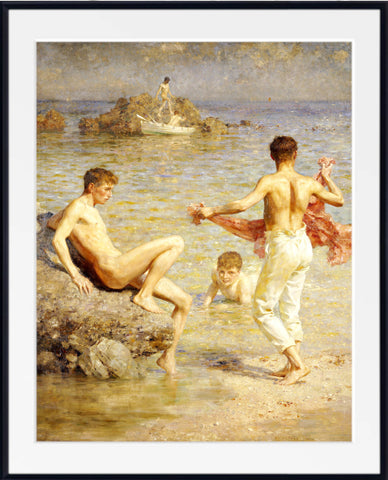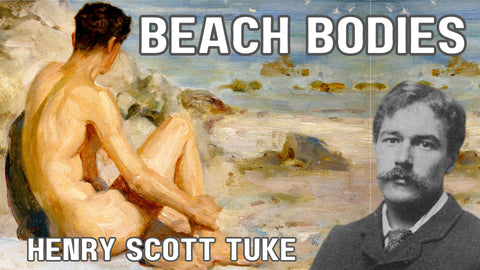Table of Contents:[hide]
In the realm of British Impressionism, one artist stands out for his dazzling use of color and light, leaving an indelible mark on the art world. Henry Scott Tuke, R.A., R.W.S. (1858-1929), is celebrated for his vibrant compositions, and one of his masterpieces, "Gleaming Waters," resurfaced in 2000, creating a buzz in the art community.
Unveiling Gleaming Waters
The painting, signed and dated 'H.S.TUKE.1911', is an oil-on-canvas masterpiece measuring an impressive 77¾ x 58½ inches. Painted in the summer of 1910, it achieved a remarkable price of GBP 201,750 at auction, exceeding the estimated range of GBP 100,000 – GBP 150,000. Its significance goes beyond its monetary value, as it represents a pivotal moment in Tuke's illustrious career.
A Long-lost Gem
'Gleaming Waters' remained hidden from the public eye since its last showcase at the Royal Academy Summer Exhibition of 1911. Believed lost, its rediscovery offers art enthusiasts a rare opportunity to witness Tuke's artistic prowess at the peak of his career. The painting captures the essence of the Edwardian era, a period that saw Tuke produce some of his finest works.
The Edwardian Era and Tuke's Artistic Peak
The years leading up to the First World War marked a prolific phase in Tuke's career. His election to full membership of the Royal Academy in 1914 was a testament to his growing reputation. Tuke's annual exhibitions at the Academy featured bathing scenes, portraits, and maritime subjects, showcasing his versatile style and consolidating his status in the art world.
Plein-Air Precepts and Freshness of Color
Tuke's commitment to plein-air painting, influenced by the Newlyn School, is evident in 'Gleaming Waters.' Set on Newporth Beach near Tuke's cliff-top home, the painting vividly captures the play of sunlight on the sea and the models' naked flesh. Tuke's meticulous depiction of the beach's topography allows viewers to identify the exact rocks portrayed.
The Models and Their Stories
Tuke's models, including Charlie Mitchell, George Williams, Maurice Clift, and Ainsley Marks, played crucial roles in bringing 'Gleaming Waters' to life. The central figure, a portrait of Maurice Clift, adds a poignant layer to the painting's narrative. Tragically, Clift, depicted here as a child playing at the water's edge, later lost his life in the First World War.
Legacy and Recognition
Catherine Dinn, an expert in Tuke's work, highlights the significance of 'Gleaming Waters' as the largest painting Tuke ever created. Despite the changing perceptions of art in the 1920s, Tuke continued to produce bathing scenes until his death, aware that the carefree innocence of the Edwardian age was forever lost.
Conclusion
The rediscovery of 'Gleaming Waters' allows art enthusiasts to delve into the captivating world of Henry Scott Tuke. As we admire this masterpiece, we are reminded of a bygone era and the fleeting nature of innocence, beautifully immortalized on canvas.



